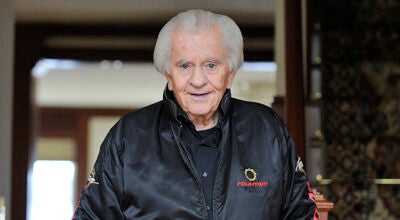Functional fitness good for anyone
Published 2:40 am Saturday, April 20, 2013
Functional fitness seems to be the latest buzz-word around fitness centers.
Functional fitness programs have evolved as fitness professionals realize the importance of reality-based exercise and the integration of various body parts for form and function. Functional exercise is patterned after real-life positions and real-life activities rather than the traditional method of isolating a single muscle group for training. We are all used to the terms cardiovascular training and resistance training. Functional fitness is a more holistic approach that involves balance, strength, endurance and coordination.
An effective functional exercise encourages various muscle groups to work together. Consider the movement involved in placing a child in a car seat, swinging a golf club, lifting a box off of a high shelf or hoeing a garden. All of these moves require integration. Our daily activities often involve combinations of squatting, bending, pushing, pulling or twisting. A good functional fitness program includes a routine that balances muscle groups, burns calories, utilizes fat, is neurologically challenging and avoids injury.
Weight machines were designed to isolate specific muscles for training. They are excellent for beginner exercisers, rehabilitation of injuries, stability and support for those with balance issues, as well as protection of the back and neck when necessary. The drawback is that when a muscle is isolated, the smaller supporting and stabilizing muscles are ignored. Having a strong muscle with little or no support can result in injury to the average fitness enthusiast. Take for example the overhead or shoulder press. Using the weight machine involves pushing a weight, which is on a lever, while in a seated position. In real life, you may think this compares to placing a box on an upper shelf, but to do this you are neither seated nor is the box attached to a lever. A more functional approach would be to stand with a free weight or medicine ball in your hands, pushing the ball up in the air in several directions. These moves will incorporate your rotational muscles (rotator cuff), your stabilizing muscles (your neck) and your supporting muscles (legs, hips, back, abdominals).
Functional exercise is often done using your own body weight for control and balance. Squats, lunges, push-ups, pull-ups and jumping rope are examples. Stability balls, medicine balls, fitness bands, steps, hurdles and balance boards are excellent adjuncts to a functional-fitness routine. The great outdoors provides us with numerous opportunities to improve our fitness levels such as walking through a forest without a trail, walking through knee-deep water at the beach or picking strawberries.
Some may feel that functional fitness is geared toward the elderly or debilitated exerciser. However, the beauty of functional fitness is that it can be simple or complex, moderate or intense. Walking heel to toe in a straight line marked on the floor is a functional exercise to improve balance and may be appropriate for those suffering from balance disorders. Doing walking lunges on a balance beam while moving a medicine ball in a chopping motion is an advanced move for a fit adult with excellent balance. So, wherever you fall on the fitness spectrum, functional fitness is for you.
Here are some simple exercises you can do at home using no special equipment:
Walk heel to toe in a straight line forward and backward. Walk on your toes forward and backward, walk on your heels forward and backward.
Stand with feet slightly apart. Rock up on to toes, and back onto heels and repeat several times.
From a standing position, lift one of your legs out to the side (keep leg straight and toe pointing forward). After 12 repetitions, switch legs.
Stand with feet together. Move feet apart to a wider position, one foot at a time, then an even wider position. Return feet to center and repeat.
Lean with your back against a wall. Have your feet 12 inches from the wall, shoulder-width apart. Slide down the wall until you are in a sitting position and hold for eight seconds. Extend your legs, returning to a standing position without taking your back off the wall. Repeat 12 times.
Face a wall and place your hands on the wall at shoulder height and shoulder width. Step back 18 inches from wall, feet shoulder width apart. Bend at elbow and bring upper torso toward wall then extend arms and push torso to starting position.
While sitting in a chair with arms, extend your arms and lift yourself out of the chair until your arms are straight. Bend at the elbows and return to sitting position. Keep your back straight and your feet flat on the floor. Repeat 12 times.
Step up onto and down off of a step. Alternate leading foot each time.
While lying facedown on the floor, use arms to push yourself up. Keep back straight and arms locked in position. Hold for five seconds and lower yourself back to the floor.
While resting on your hands and knees (doggie style), lift right arm straight in front and lift left leg straight behind you. Hold for 10 seconds, then alternate opposite arms and legs.
For more great functional fitness ideas, look up functional fitness on-line or consult a fitness professional. The sky is the limit in this exciting area, so get moving!
Judy Van Dorp, RN, CES, is director of Vidant Wellness Center–Washington and may be reached at 252-975-4236.





